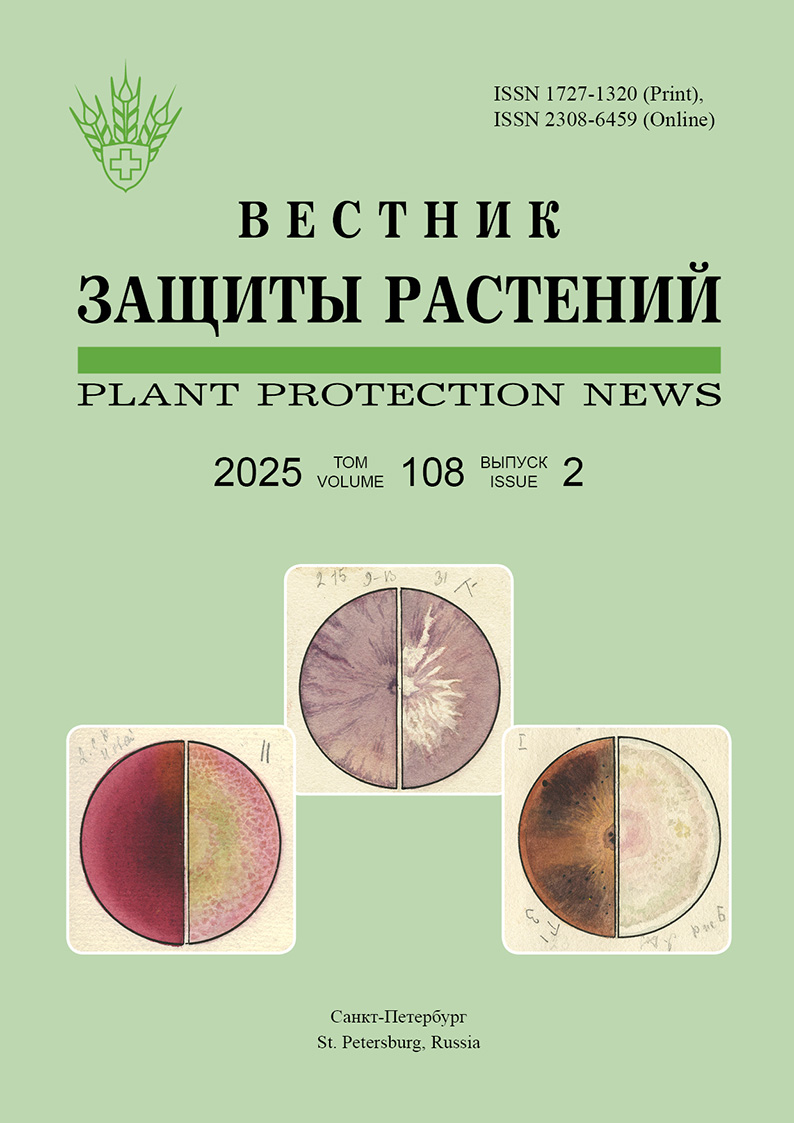Damage to winter and spring soft wheat grains by the Sunn pest Eurygaster integriceps and the wheat thrips Haplothrips tritici in the forest-steppe zone of the Lower Volga Region
Keywords:
number and mass of grains, weather conditions, varieties, harmfulness, statistical data processingAbstract
The work aimed at determination of winter and spring soft wheat grain damage by the Sunn pest and wheat thrips in the forest-steppe of Samara Province, depending on weather conditions and wheat variety. The wheat varieties – Povolzhskaya 86, Povolzhskaya niva, Konstantinovskaya (winter); Kinelskaya 59, Kinelskaya otrada and Kinelskaya yubileynaya (spring), were examined in 2015–2017 at the Volga Research Institute. Temperature fluctuations and changes in precipitation in the spring and summer had a significant impact on the development of phytophagous insects. Low temperatures and excessive precipitation served as unfavorable factors for these pests in winter and spring wheat crops. At the same time, an increase in temperature and a lack of moisture contributed to the activation of pests, increasing their harmfulness. The greatest decrease in the mass and number of grains damaged by the Sunn pest and larvae of the wheat thrips was observed in the dry and hot year of 2015 in the winter wheat variety Konstantinovskaya; the least – in the wet and cool year of 2017 in the variety Povolzhskaya Niva, spring wheat – in the varieties Kinelskaya Otrada and Kinelskaya Yubileynaya. Over the years of research, new varieties of winter wheat, such as Povolzhskaya Niva, and spring wheat, such as Kinelskaya Yubileynaya, have been affected by phytophagous insects to a lesser extent. These varieties can be recommended for use in immunity breeding.



